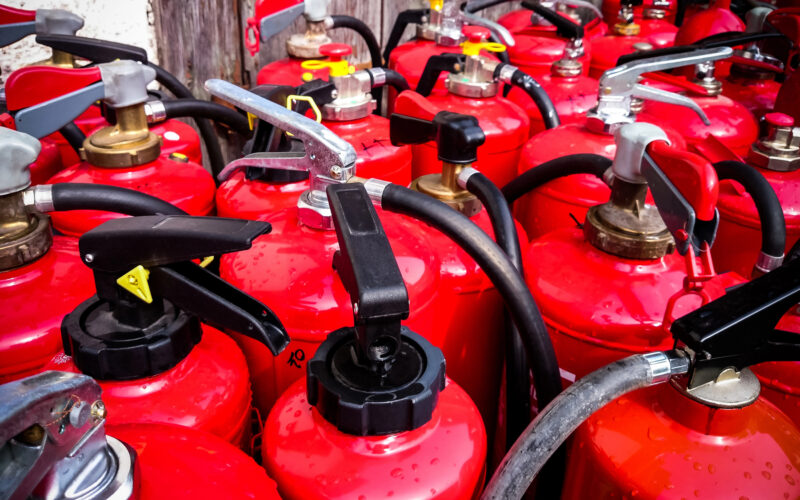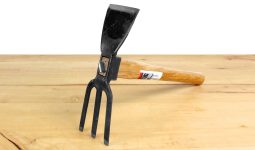Fire safety is essential to any building or home; having the correct fire extinguisher can make all the difference in an emergency.
Fire extinguishers are crucial safety equipment that can save lives and prevent property damage in a fire.
But did you know that there are different types of fire extinguishers designed to tackle various types of fires? Knowing these types and their uses is essential to help you choose the right one for your needs.
1. Water Extinguishers
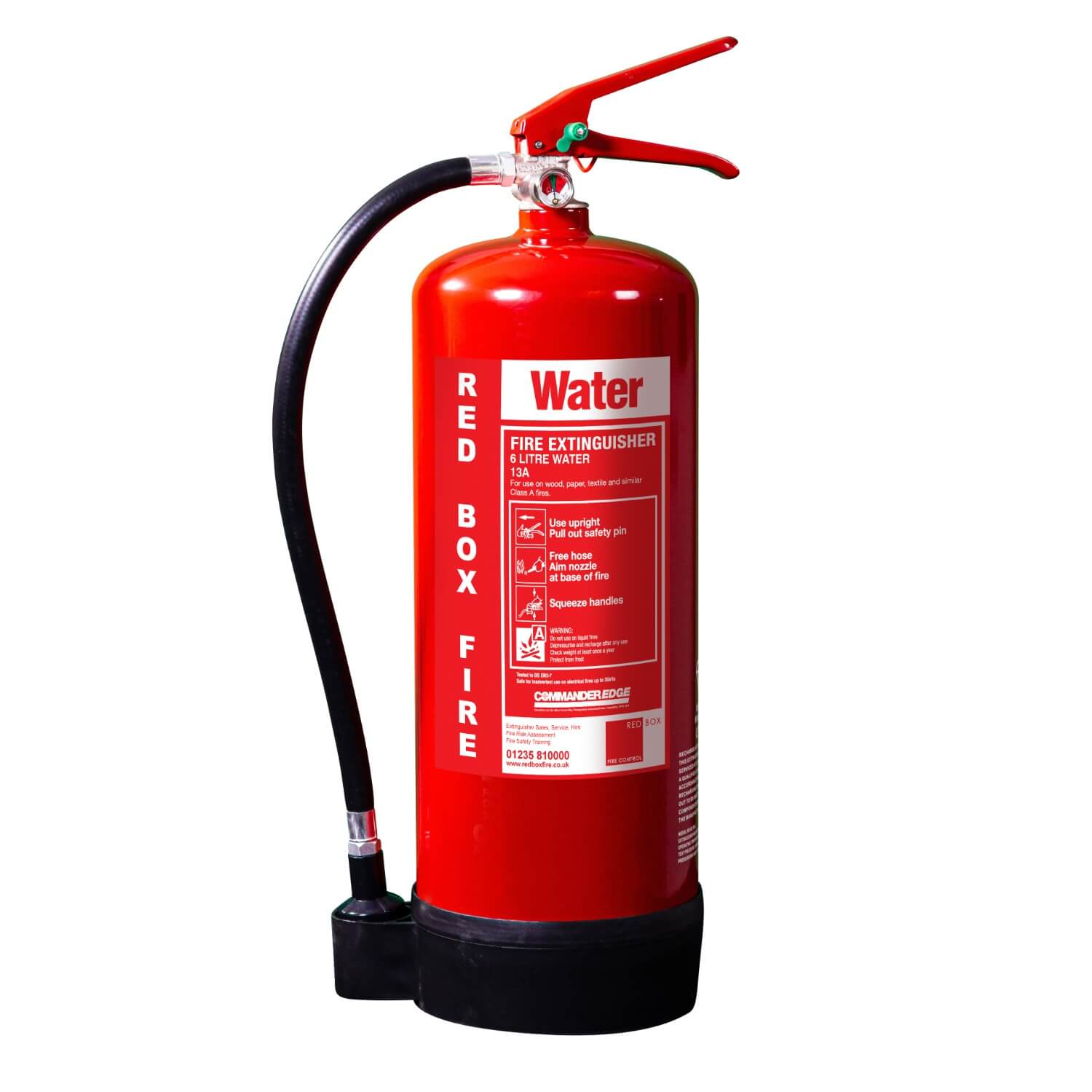
Some things, like wood, paper, cloth, and plastics, are called “Class A” materials because they burn easily. To put out these fires, we use water extinguishers.
Now, how do they work? Think about how you might cool off on a hot day by jumping into a pool. Water extinguishers do something similar.
When they spray water onto a fire, it cools down the flames, making it harder for them to keep burning.
But here’s the thing: water extinguishers aren’t suitable for all types of fires.
If you try to use them on fires involving stuff like oil or electrical equipment, it can make things worse.
Water and electricity don’t mix well, and throwing water on an oil fire can make it spread.
So, while water extinguishers are great for some fires, it’s essential to know when to use them and when to use other types of extinguishers.
2. Foam Extinguishers
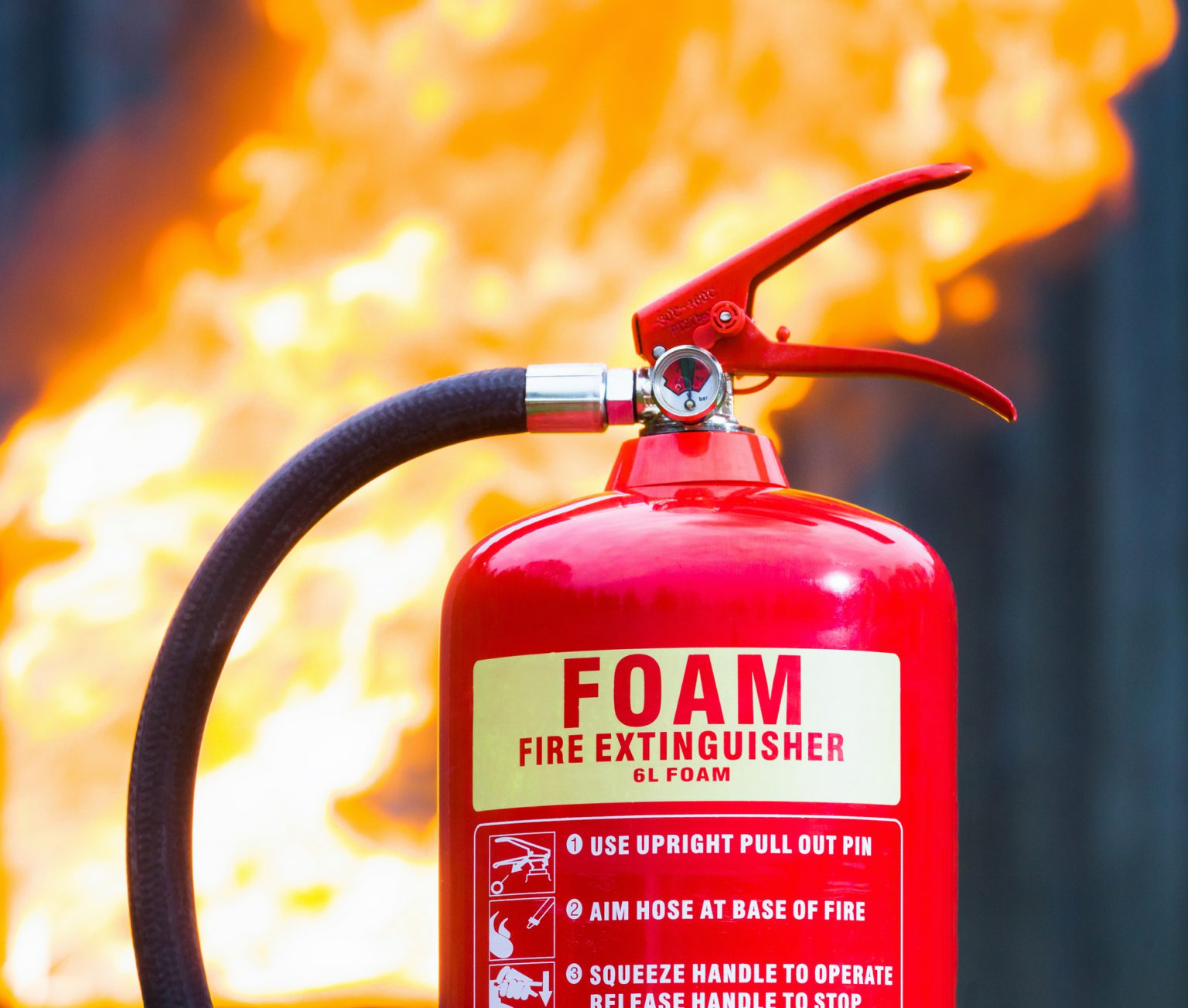
Next on our list of the different types of fire extinguishers are foam extinguishers.
Foam extinguishers, known for their versatility, combat Class A and Class B fires effectively.
As mentioned earlier, Class A fires involve combustibles such as wood, paper, cloth, and plastics, while Class B fires encompass flammable liquids like petrol, diesel, and oils.
The effectiveness of foam extinguishers lies in their ability to create a barrier between the fuel and the oxygen, suffocating the fire and preventing reignition.
When discharged, foam extinguishers emit a foam blanket covering the surface of the burning material.
This foam not only cools the fire but also seals off the fuel source, cutting off its oxygen supply.
As a result, the fire is deprived of the elements it needs to sustain itself, leading to its suppression.
However, it’s important to note that foam extinguishers may not be suitable for all flammable liquids.
In particular, don’t use them on fires involving cooking oils or fats, as the foam can cause the fire to spread.
Therefore, carefully assess the fire’s nature and select the appropriate extinguisher to ensure safe and effective firefighting measures.
3. Dry Powder Extinguishers
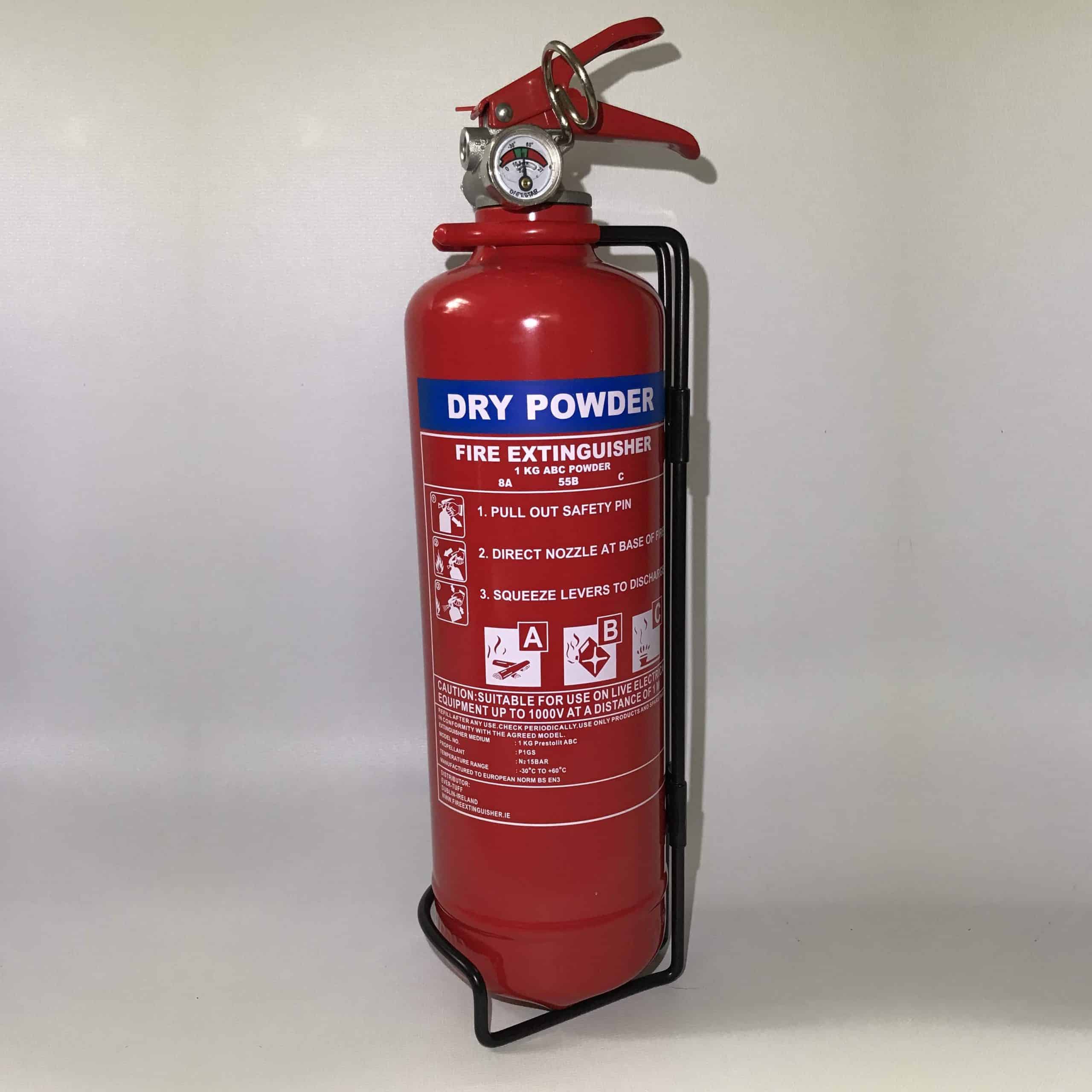
Dry powder extinguishers are among the most versatile fire extinguishers, capable of tackling Class A, B, and C fires.
They contain a specially formulated powder, typically monoammonium phosphate or sodium bicarbonate.
When discharged, the powder forms a blanket over the fire, cutting off the oxygen supply and suppressing the flames.
This makes them effective in controlling fires in various scenarios, from household to industrial settings.
However, there are limitations to their use. The powder can be abrasive and may cause damage to sensitive equipment.
The discharge can also create a dust cloud, reducing visibility and potentially causing respiratory irritation.
Despite these drawbacks, dry powder extinguishers remain valuable for fire safety, especially in environments with multiple fire hazards.
Proper training in their use and understanding their limitations are essential for effective fire suppression.
4. Carbon Dioxide (CO2) Extinguishers
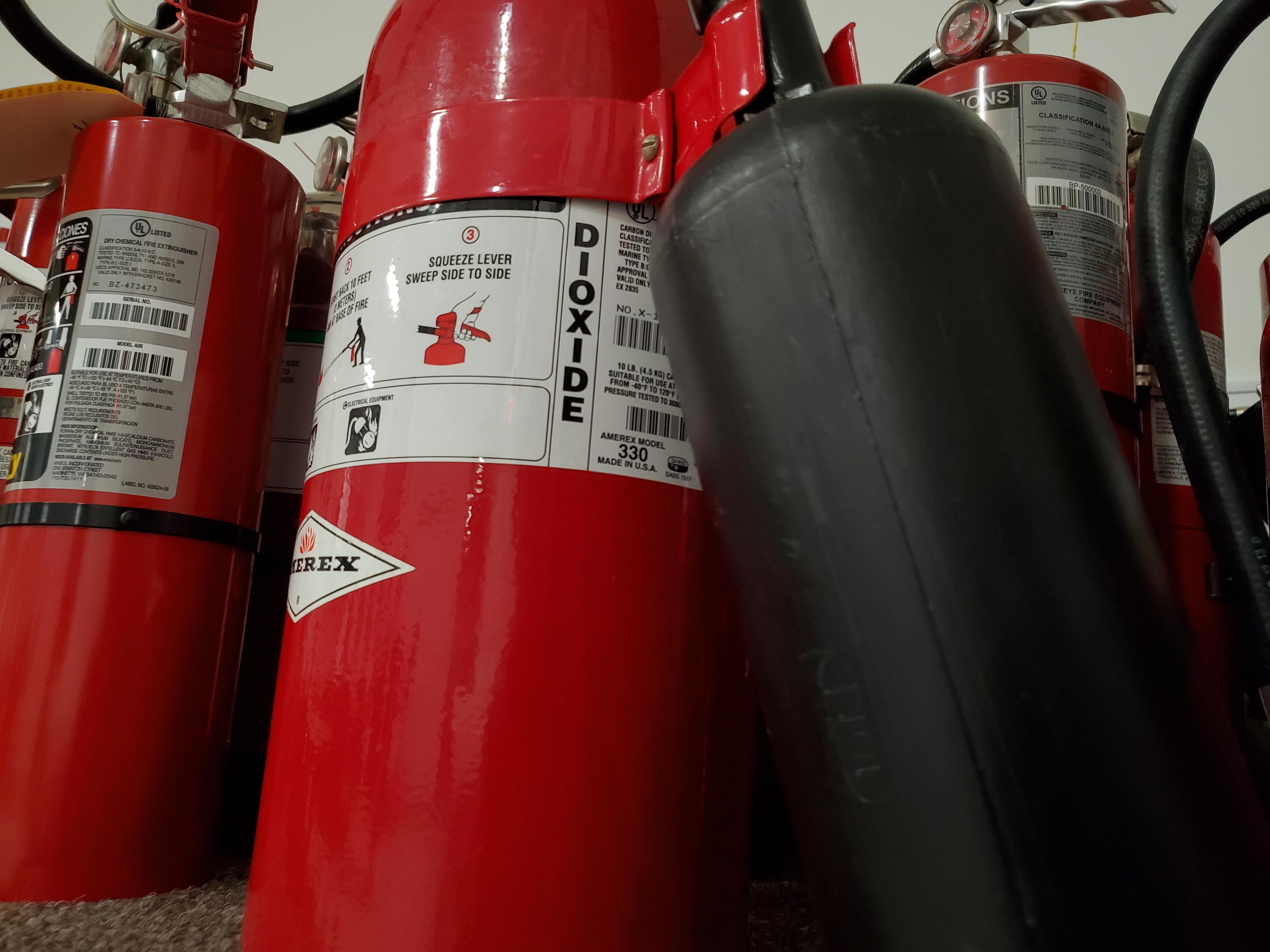
Among the different types of fire extinguishers is the CO2 extinguisher.
Carbon Dioxide (CO2) extinguishers combat Class B fires involving flammable liquids and electrical fires (Class C).
These extinguishers contain pressurized carbon dioxide gas stored as a liquid, which expands rapidly when discharged, displacing oxygen and effectively suffocating the fire.
For Class B fires, CO2 extinguishers form a dense blanket of gas over the surface of the flammable liquid, cutting off the oxygen supply and extinguishing the fire.
When used on electrical fires, the CO2 gas removes oxygen from the surrounding area.
This prevents the fire from spreading and causing further damage to equipment.
One of the significant advantages of CO2 extinguishers is their ability to leave no residue after discharge.
This feature makes them particularly suitable for use on electrical equipment and machinery, where cleanup and damage from other extinguishing agents could be problematic.
Also, the rapid dispersion of CO2 gas minimizes the risk of reignition, making these extinguishers highly effective in controlling fires.
However, it’s crucial to exercise caution when using CO2 extinguishers in confined spaces.
The rapid discharge of gas can displace breathable air, posing a risk of asphyxiation to anyone nearby.
5. Wet Chemical Extinguishers
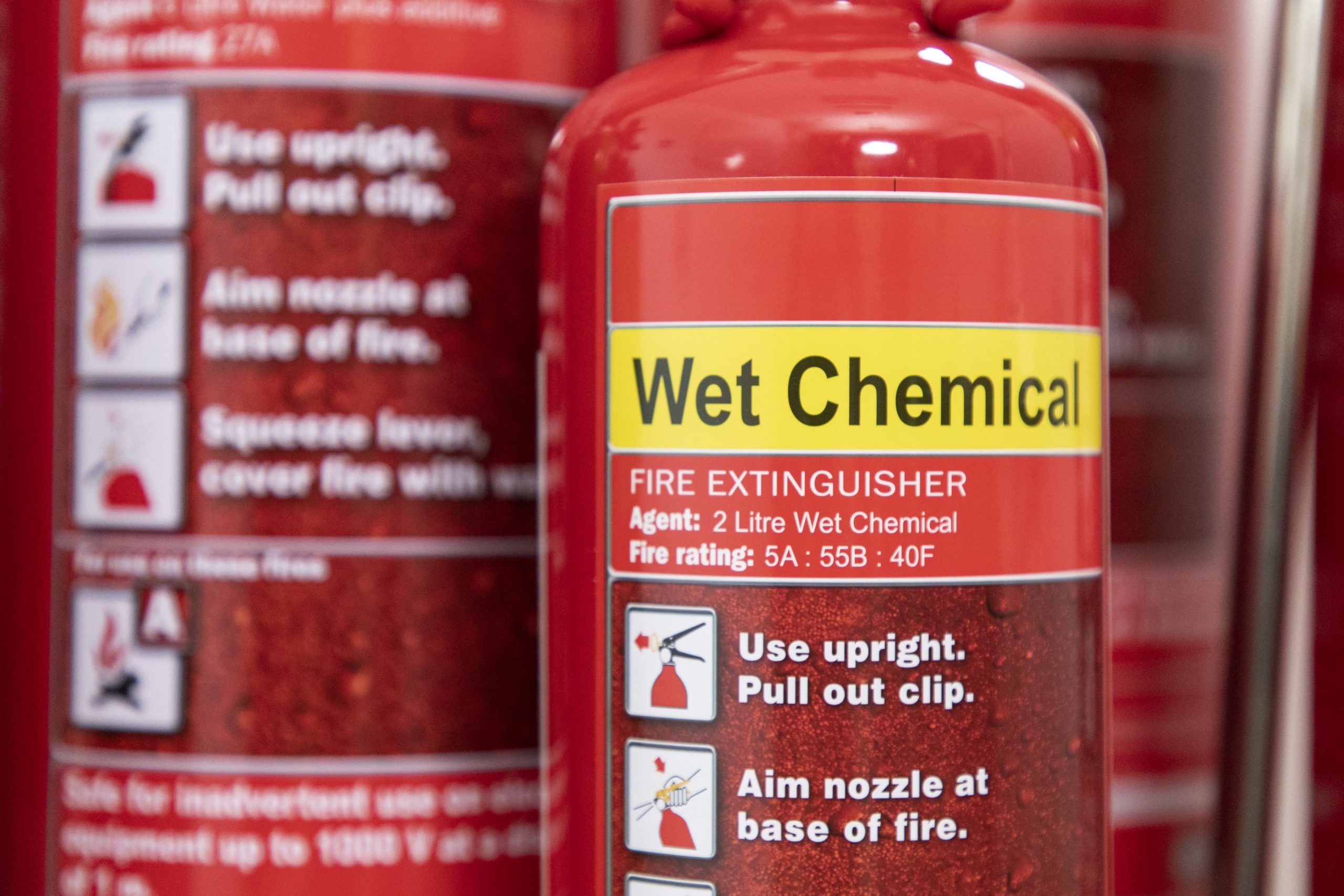
Wet chemical extinguishers tackle Class K fires involving cooking oils and fats in commercial kitchens and restaurants.
These extinguishers use a specialized solution that reacts with the hot oils, forming a soap-like foam.
This foam rapidly cools the fuel source, preventing reignition- and effectively extinguishing the fire.
One key advantage of wet chemical extinguishers is their ability to create a thick blanket over the burning oil, which helps to suffocate the flames by sealing off the oxygen supply.
Also, the chemical reaction between the solution and the cooking oil creates a barrier that inhibits the release of flammable vapours, further reducing the risk of reflash.
Further, wet chemical extinguishers are designed to be safe for cooking appliances, including deep fryers and grills.
They have been tested to ensure they do not cause further damage or pose a risk of electric shock.
Thus, they’re ideal for environments where Class K fires are more likely to occur.
6. Clean Agent Extinguishers
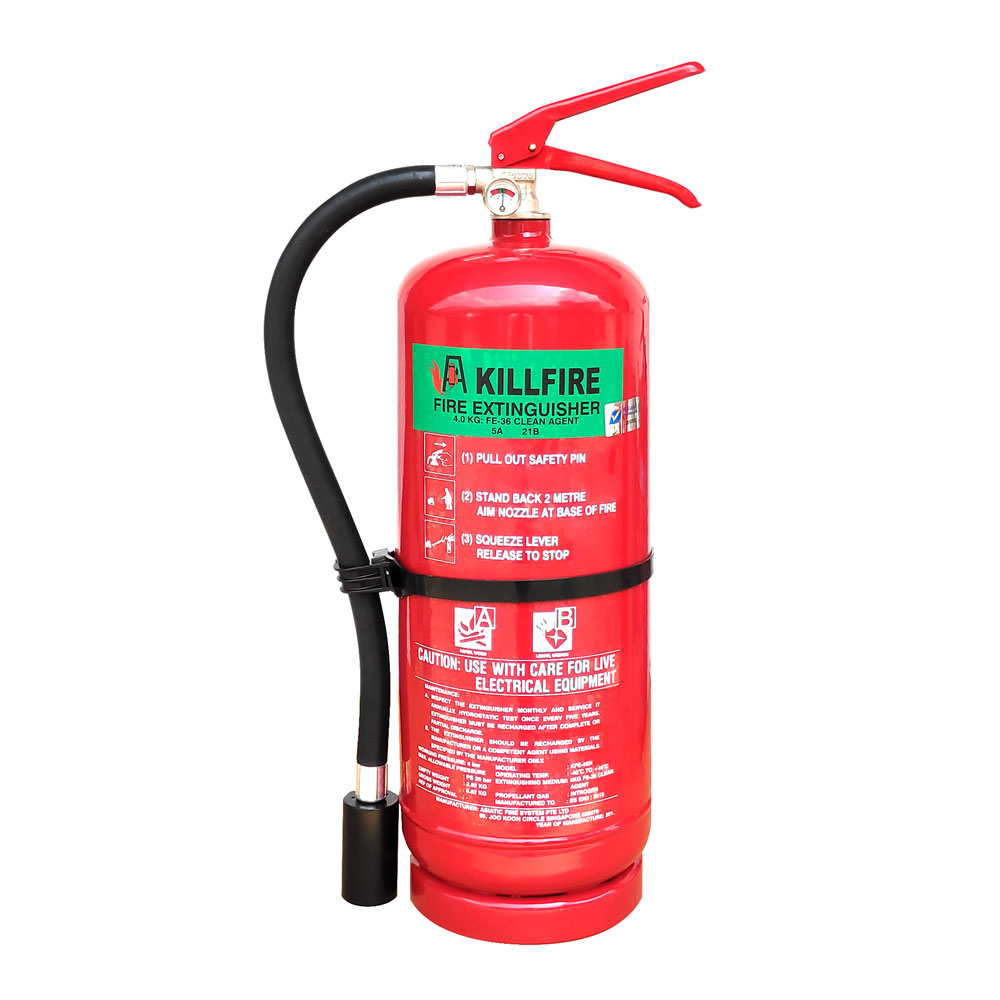
The last on our list of the different types of fire extinguishers are clean agent extinguishers.
Clean agent extinguishers combat fires in environments where water, foam, or dry chemicals could cause damage or contamination.
They use non-conductive, volatile gases such as Halon or Halotron, which are highly effective in extinguishing fires without leaving residue or harming sensitive equipment.
These extinguishers are especially valuable in data centers, telecommunications facilities, server rooms, museums, and laboratories, where traditional extinguishing agents may cause extensive collateral damage.
One of the significant advantages of clean agent extinguishers is their rapid suppression capability.
They work by chemically disrupting the combustion process, depriving the fire of the oxygen it needs to sustain itself.
Unlike water-based solutions, these extinguishers are also electrically non-conductive, making them safe for live electrical equipment.
Moreover, clean agent extinguishers are environmentally friendly alternatives compared to some older extinguishing agents like Halon, which has ozone-depleting properties.
Halon production has been phased out due to environmental concerns, and newer clean agents like Halotron are designed to be less harmful to the ozone layer.




